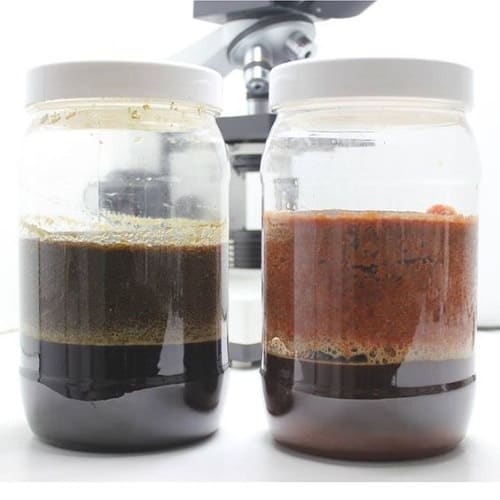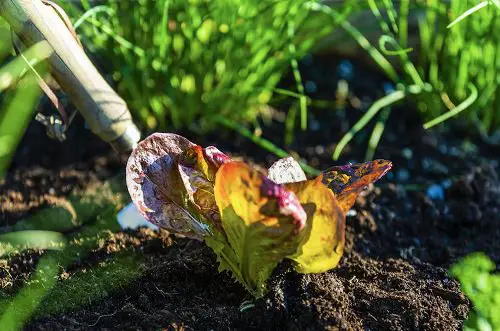Here are the best DIY Plant Probiotic Recipes to help them thrive with the help of the essential microorganisms and beneficial bacteria!

Probiotics can play a vital role to improve immunity, boost gut health, safety from potential diseases, and promote strength in humans. If used in the right way, they work similarly in plants, helping them to thrive and stay green. Let’s have a look at the best DIY Plant Probiotic Recipes!
Here are the best recipes to make organic fertilizers at home
What is Plant Probiotic?
In simpler terms, these are essential and useful bacteria that improve nutrients and plant’s bioactive compounds ensuring lush growth, and more production in vegetables and fruits. These useful microbes are applied as bio fertilizers that help in improving the overall plant growth while maintaining more sustainable agriculture as they are environmentally friendly.
DIY Plant Probiotic Recipes
1. Worm Casting Tea

What You’ll Need:
- 2 Cups organic compost or 1 cup worm castings
- 1 Tablespoon blackstrap molasses
- 1 Tablespoon organic kelp fertilizer or a handful of dried ground kelp
- You can also add 1 teaspoon organic liquid fish fertilizer
Method:
- Mix all the ingredients in a bucket with 5-gallon water and stir properly.
- Activate the bubbler for a day and your probiotic is ready to use.
- It is recommended that to use the solution immediately.
- If you have made more than needed, then do not keep it for more than 2-3 days.
- Simply water the plant with the solution or use it as a spray.
Benefits:
It helps to enrich the roots of the plant by repopulating the soil with beneficial microbes. The mixture also helps the soil retain water for a longer time. It is also great for foliage plants as it helps them to be bushier.
2. Garden Probiotics
What You’ll Need
- One-quart mason jar with lid
- 1 Capsule of quality probiotic
- 1/4 Cup garden molasses
Method:
- Add 1/4 cup molasses to the jar.
- Squeeze the contents of a probiotic capsule onto molasses.
- Add water to the jar and cover the lid and shake till the contents get dissolved.
- Keep the jar in a warm area (80-90 F) until a white/gray material sets on the bottom (1-7 days). If you are not using it immediately then store it in a refrigerator.
A white or gray substance at the bottom of the jar is a sign of successful culturing. Dilute it in a liter of water and use it to water your plants.
Benefits:
The beneficial fungi and microbes add crucial nutrients to the plant and the plant provides them with sugar. This relationship results in better yields, increase pest resistance, and better overall health of the plants.
3. Fermented Plant Juice

This growth booster helps in the active growth of the plants. Fruit/Veg/Plant material is allowed to ferment for 7-10 days with sugar and garden molasses. The process draws the juices out of the plant material via osmosis and also serves as a food source for the microbes carrying out the fermentation process. It works really well for flowering plants and vegetables.
The University of Hawaii has a great recipe here
Benefits:
It enhances the overall productivity of the soil, makes foliage bushier, and adds more sweetness to the fruits.
4. Lactobacillus
What You’ll Need
- 1 Cup of Rice
- 1 Cup of Unpasteurized milk
- Nonchlorinated Water
- Half a cup of garden molasses
- Cheesecloth or strainer
Method:
- Add rice, unpasteurized milk, and garden molasses to the jar. Add water and let it soak for 25 minutes and shake the jar till the water becomes cloudy.
- Strain the mixture using a cheesecloth and let it sit for 8-12 days.
- Dilute the mixture with 2 liters of water and use the solution to water the plants.
The University of Hawaii has done research on this topic. See details and method here
Benefits:
Lactobacillus works alongside in sync with the fermenting fungi, which, together, helps to accelerate the breakdown of plant residues, helping to create beneficial aerobic microbes.
5. Yogurt and Buttermilk
Using curd and buttermilk on plants is a great way to keep pests under control. They also have anti-fungal properties and provide good micronutrients to plants. Mix 50-80 grams curd with 2 liters of water and spray it every 20-30 days on plants.
Mix buttermilk in a 1:1 ratio with water and pour it on the roots every 25-30 days.
Benefits:
Works as an excellent organic fertilizer for the plants. They also shield the plants from pests as they have anti-fungal properties.
6. Compost Tea

Compost tea is rich in nematodes, oxygen-loving (aerobic) bacteria, microbes, fungi, and other beneficial microorganisms that help to improve the nutrition in the soil, helping the plants to grow faster with increased yields.
Here’s a detailed video on how you can make Compost Tea easily at home
Benefits:
High in microbiological activity, it helps the soil retain all its nutrients and eliminates root diseases. It also promotes the quality of mature compost, helping in the decomposing of organic matter with beneficial bacteria and fungi.
Why You Must Use Probiotics for Plants
Just like humans, plants also need beneficial bacteria. They are similar to gut probiotics and ensure mobilization of nutrients, prevention of plant diseases, and providing the needed dose of iron, magnesium, and calcium, all of which contribute to better overall growth.



